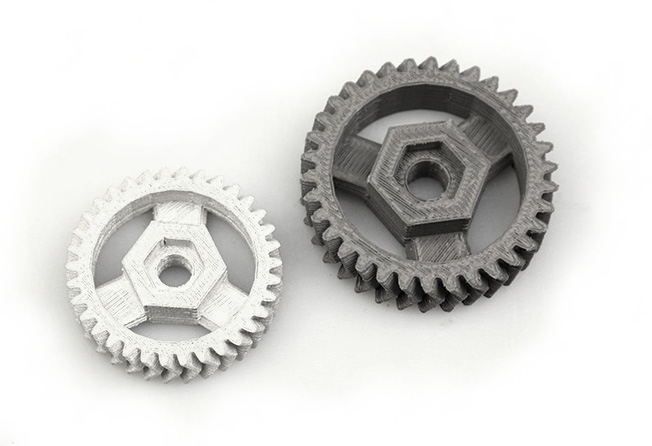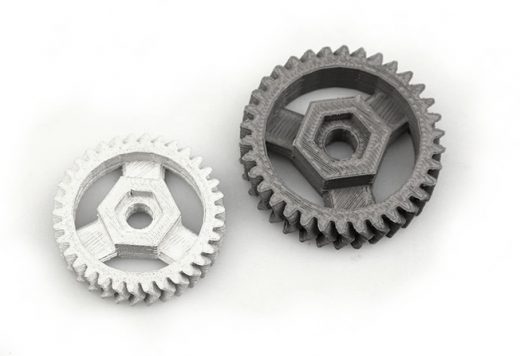2019 American Manufacturing Business Growth
— August 23, 2019 
Throughout history, wealth and job creation has been at the forefront of the American citizen concerns. One of the major industries responsible for both factors is manufacturing, which has continued to see growth as time passes. Technological advancements, innovative machinery, and improved processes have culminated in the success of manufacturing.
Business growth during the last two quarters of 2018 has been positive and the economy has reaped the benefits. Technology, such as CNC machinery, continuously changes the manufacturing landscape to become more automated, resulting in efficient practices and manufacturing growth. A skills gap still stunts some developments but with the right approach, the effect can be minimized. Several companies including Hewlett Packard, Haas and Mazak have made great strides in the industry and are worth keeping an eye on for upcoming developments.
There are five reasons for manufacturing growth:
- Effective productivity mostly as a result of innovative technologies.
- Lower oil prices leading to reduced manufacturing costs.
- Higher remuneration packages for workers.
- Companies want to keep American intellectual property a secret.
- Consumers are aware that keeping manufacturing local creates jobs.
Comparing US Manufacturing to Global Standards
America held the position as the world’s largest manufacturing country from 1970 and into the 21st century. During 2010, China moved into the pole position, which was a jump from fifth place in 1970. This placed the US in the second position for manufacturing.
China is responsible for 20% of manufacturing output; America 18%, followed by Japan with 10% of production. Germany, South Korea, and India take up the next spots, with remaining percentages attributed to other countries.
Manufacturing Industry Statistics
For several decades economists have been warning that the manufacturing sector will suffer a great reduction in size, especially as more focus is placed on a service-based economy. The statistics agree with the sentiment to some extent. The percentage of manufacturing jobs has greatly decreased, yet the sector provides a disproportionate share of the American GDP and creates jobs in related sectors.
The contribution of manufacturing to GDP was $ 2.33 trillion in 2018 and was responsible for 11.6% of economic output in the US. Approximately 50% of the goods produced in manufacturing were exported from America.
The impact of manufacturing on other industries cannot be ignored when considering business growth. During 2018, for every one dollar of manufacturing expenditure, additional business growth of $ 1.89 appeared in other industries. The affected sectors include transportation, supporting services, and retail operations.
Manufacturing growth has an opportunity for further increased growth if taxes can be lower. Traditionally, the US has not been the best at negotiating with other countries, which pushes up other costs, such as import tariffs and makes it costly to get hold of raw materials. Addressing these concerns will help the US to further improve manufacturing growth.
Employment Growth within Manufacturing
Employment figures in the manufacturing sector are constantly growing, with current job availability being the same amount as it was 69 years ago. The employment possibilities are great, considering that many jobs were lost through technology, automation, and robotic processes. During December 2018, there were 12.84 million manufacturing jobs available, with 32,000 positions being added in that month alone. The sector employed 8.5% of Americans, which is drastically lower than the 30% employed in manufacturing during the 1950s.
The increased amount of positions can be attributed to government intervention. The US government is pushing exports to other countries and requires more people to oversee the manufacturing process and its parts. Additional measures, such as tax cuts, credit opportunities, and the Job Act, combine to increase the number of jobs available.
Even though an increase in jobs has taken place and the benefits are good, there are still a lot of open positions. Just fewer than 90% of manufacturing positions are still available to potential employees but organizations are struggling to find suitably qualified candidates.
The phenomenon is called a skills gap, where there is a high demand for people with a particular skill but too few people available with the skill. With no clear solution to the problem, the skills gap will continue to take place from 2018 and as long as 2028. The 10-year skills shortage could result in a loss of $ 454 billion for manufacturing by the year 2028.
Workers in the manufacturing industry receive 12% more remuneration than people at a similar level in other sectors. In monetary terms, a manufacturing employee would earn $ 40.79 for every working hour.
Leading Manufacturing Companies
Several companies in the manufacturing industry are worth taking a look at, especially since they have been experiencing growth due to new technologies.
Hewlett Packard
Hewlett Packard, often known as HP, has been in the printing game for a long time. HP is a household and business name when it comes to printing. During 2018, HP launched a new printer, the Metal Jet 3D, which can print 3D objects from any type of metal. The innovation improves speed, assembly, quality and provides economies of scale to manufacturing businesses. The disruptive technology is said to improve productivity 50X and can supply the end product directly to automotive and manufacturing companies.
Haas CNC
Haas is a well-known name in the manufacturing industry and their technologies are also seen in Formula 1. The latest technologies from Haas include 3D printing and CNC machines with the ability to travel across five dimensions. Each piece of Haas machinery can be utilized in various ways by manufacturing companies and contain many tool options.
Mazak
A leader in technology solutions, Mazak has created systems that ensure multi-tasking, turning, milling, and automation. The machinery often works on 5 axes and utilizes CNC controls. The company has its headquarters in Kentucky where machines are designed and built by Americans. Systems such as iSmart and connected plants make them a leading manufacturer to help improve productivity in the manufacturing sector.
The manufacturing industry experienced some of its best growth during the last two quarters of 2018. Growth has continued into the first half of 2019 and economists are awaiting growth results for the remainder of the year.
Business & Finance Articles on Business 2 Community
(26)


